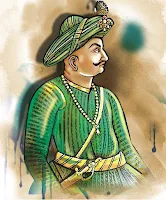Kalki 2898 AD (Telegu; 2024)
Director: Nag Ashwin
Why is it that every culture predicts a nihilistic future where annihilation is the final outcome? Almost all paint a picture of chaos where morality is down the drain, virtue becomes an alien feature, and pandemonium is king.
According to Hindu culture, time is cyclical in Nature. A time unit, chaturyoga, lasts 8.64 million years. It is divided into four yugas—Satya, Treta, Dwarpa, and Kali. We are in Kaliyuga, which commenced in 3102 BCE and will last for 432,000 years. Each yuga depicts further deterioration of human behaviour. Like the four seasons on Earth will repeat indefinitely. By the end of Kaliyuga, human behaviour will be despicable, with total anarchy and chaos, reaching the point of entropy. Decoiry, emphasis on external beauty, false divinity, fakery, greed, and the list go on about what can be expected by the end of Kaliyuga. Nature would need to reboot and restart the system, returning to Satya, the golden age. Rinse and repeat.
It is believed that the end of the Kurukshetra War marked the commencement of Kaliyuga. With so much disorder (adharma) ongoing, with so much breaking of conventions and ethics, it is said that Vishnu's 8th avatar, Krishna, manifested to set rules for mankind so the effects of Kaliyuga could be minimised.
It is prophesied that Vishnu's final avatar, the tenth, will appear at the end of Kali-yuga to set order once again and pave the universe into the next yuga, Satya-yuga, the golden age.
In the Hindu scripture, eight icons are booned (cursed) with immortality. Besides Hanuman, Vyasa and Markandeya, Ashwattama was cursed by Krishna to roam the jungles, deformed with wounds festering with blood and pus for 3,000 years. For the context, Ashwattama was Drona's son. Drona was the archery teacher to both Pandavas and Kauravas. Because of politics, Drona and Ashwattama fought for the side of the Kauravas. Krishna was the charioteer for Arjuna, the principal warrior of the Pandavas.
As dirty as war can be, the Pandavas tricked Drona into believing that his son, Ashwattama, had died in the war. Drona's temporary lapse of concentration cost him dearly. In actual fact, an elephant named Ashwattama was killed. The angry Ashwattama went on a rampage, which eventually led to him attempting to kill Pandava's last heir, Uttara's unborn child, Arjuna's grandchild. Hence, the curse.
This is where the movie starts. Six thousand years into Kali-yuga, 2898 CE, the world is dystopian, with Kashi being the only 'civilised' place left standing. Kashi is ruled by a despot harbouring serum from pregnant mothers for youth rejuvenation. I do not think Shrimad Bhagavadam describes things as these. The storytellers have taken the artistic liberty to draw in viewers. The rebels have gone underground at Shambala. One of the mothers in the incubation pods carries Kalki in her womb. But the extraction of serum proves fatal. Hence, the rush to save the day. We can deduce this from the fact the mother's name is Sumathi.
Ashwattama springs into action. A bounty hunter who catches anyone and anything for a fee is also on the trail. Unbeknownst to the bounty hunter, Bhairava (a reference to Shiva's incarnate. controller of time) is a reincarnation of Karna. The movie is obviously just a teaser to one of many more sequels.
 |
Ashwattama was cursed with immortality for aiming
a celestial weapon at Abhimanyu's pregnant wife to
kill the Pandava lineage. In his defence, he was not
taught how to disarm the weapon. |
With all the CGIs, this is undoubtedly a rare attempt of Indian cinema to create science fiction using Indian mythology. With no local templates to follow, it is evident that the makers got the prototypes of their props from Star Wars.
Is it a coincidence that most civilisations and religions present a world entirely of sin and debauchery, leading to the annihilation of the world? And a saviour always comes on a white horse. What do you know? Kalki is said to ride a white horse, too. Why are there so many overlaps between Abrahamic and non-Abrahamic traditions? The story of a newborn escaping royal capture happened in the cases of Jesus and Krishna. Moses and Karna were placed in a waterproofed basket in the river to be adopted by someone else.
One possible explanation goes back to the time after Nebuchadnezzar's army destroyed the First Temple of Jerusalem. The Israelites were taken captive and brought to Mesopotamia as slaves. There, intermingling with the local populace before King Cyrus the Great brought them back to Israel, the early Jews added tales common to Hinduism to their pantheon of stories.
(P.S. 2898 CE is long before the end of Kali-yuga if it lasts 432,000. It seems too premature for Kalki to be born.)











.jpg)










